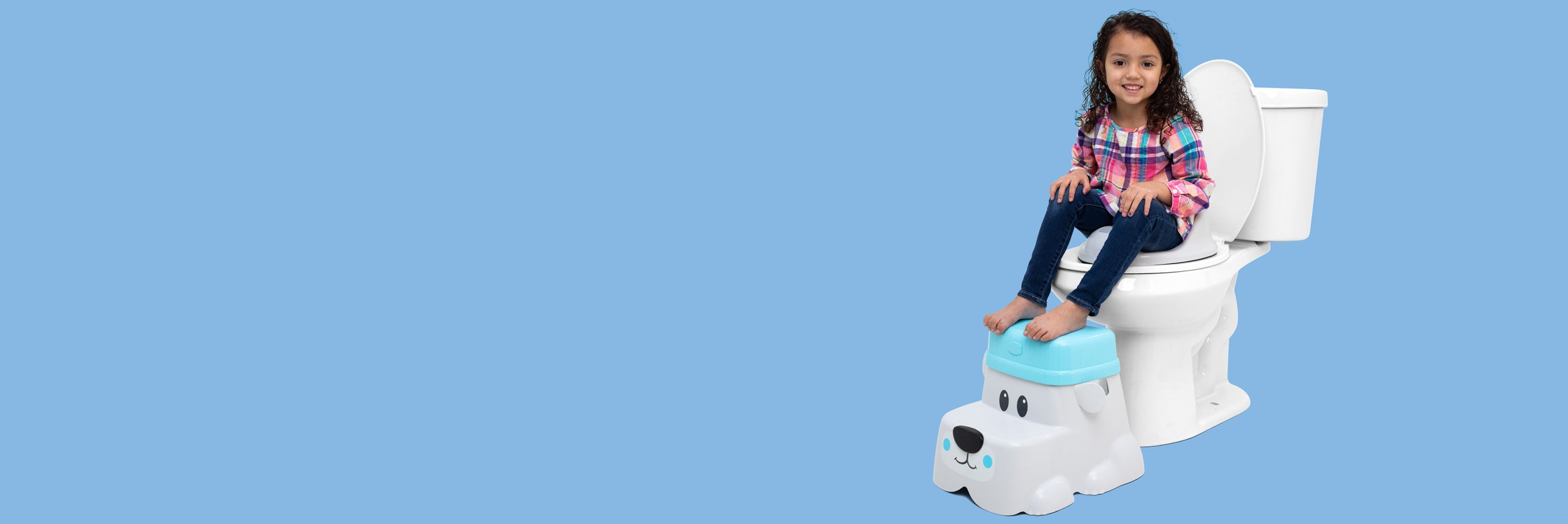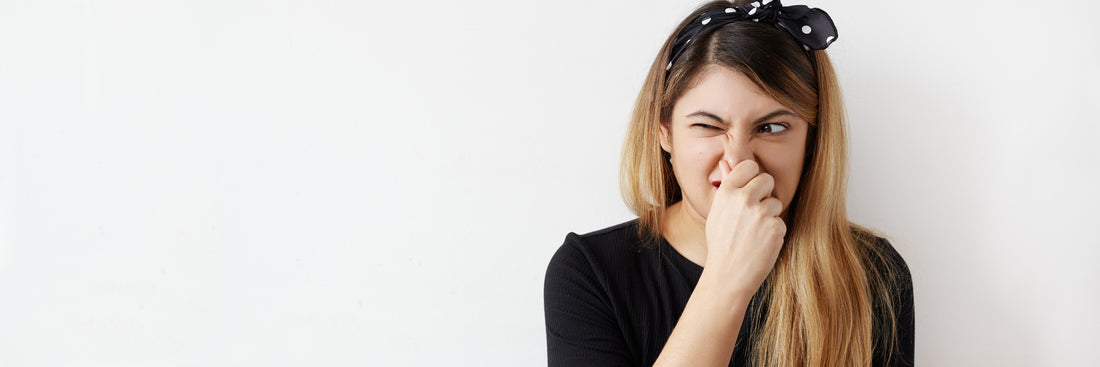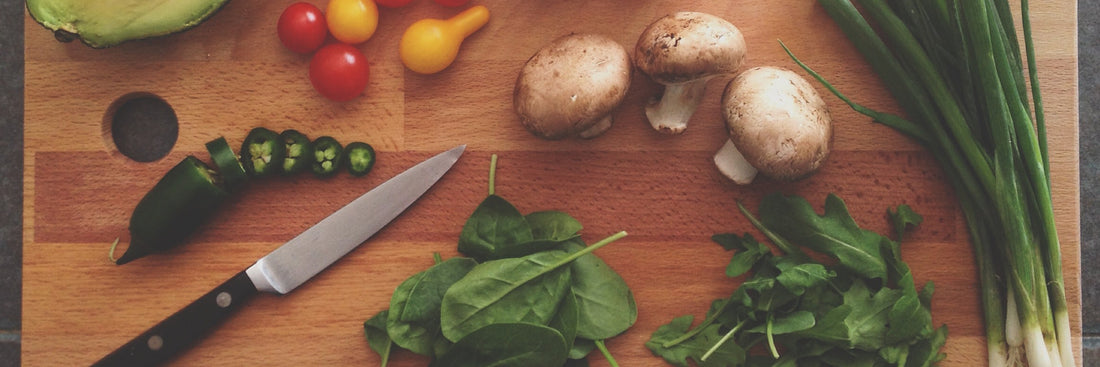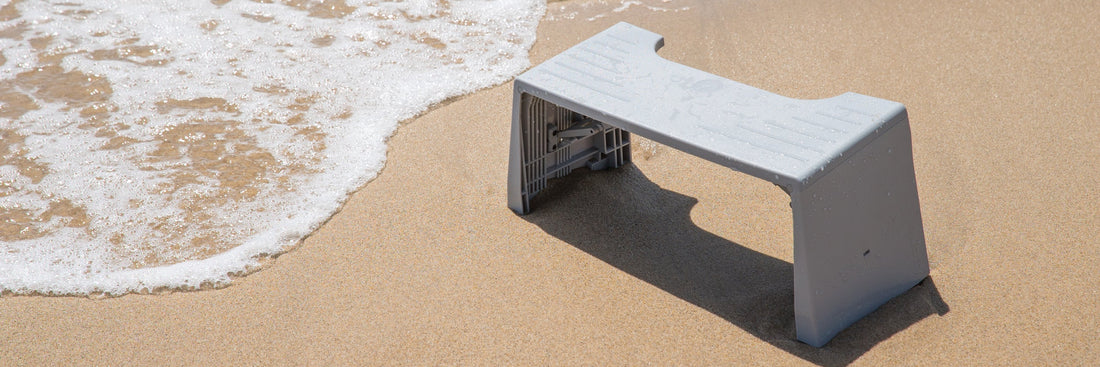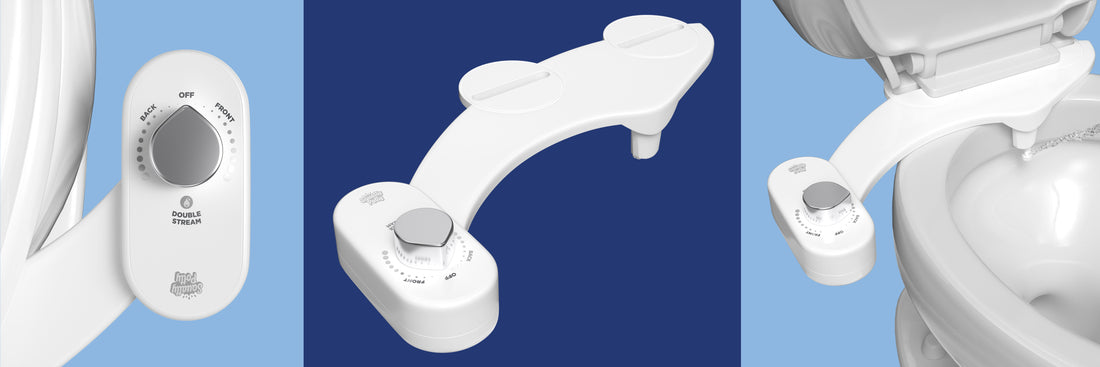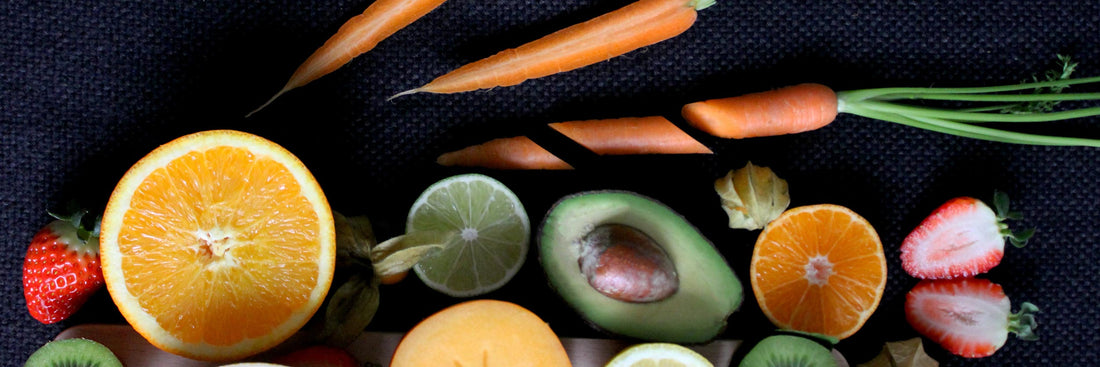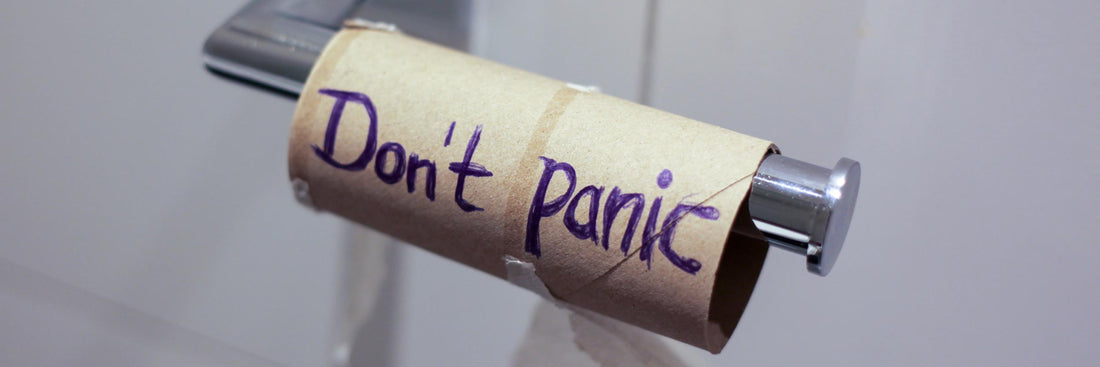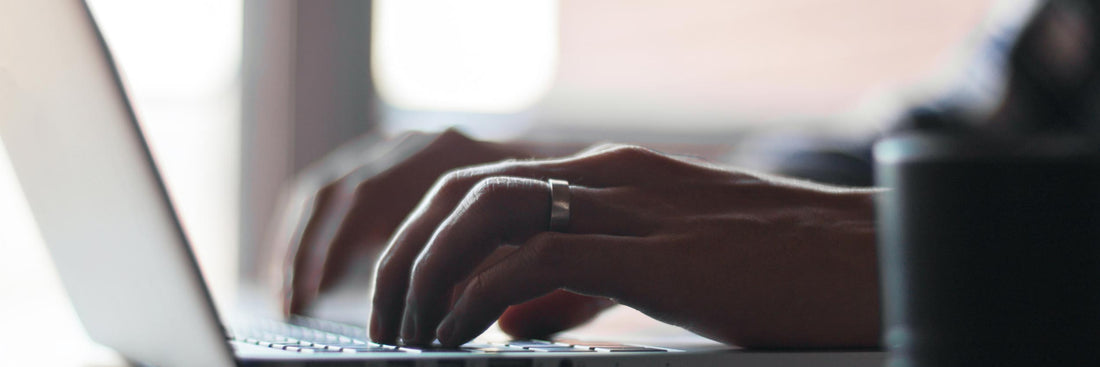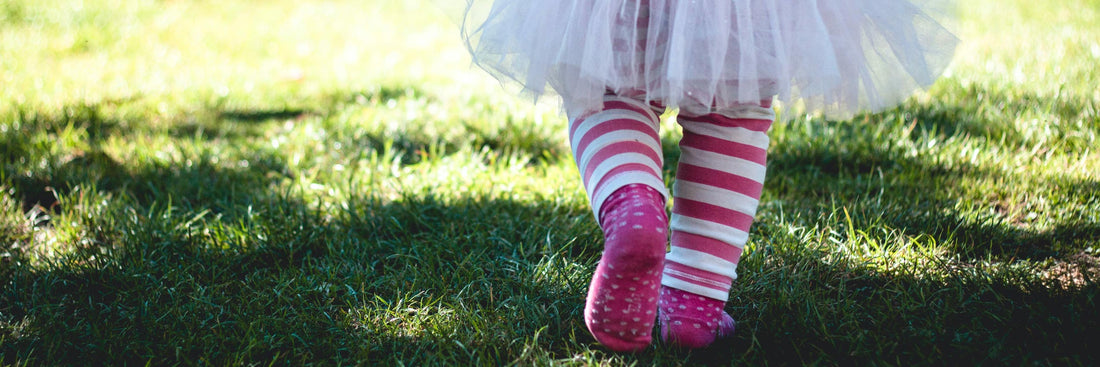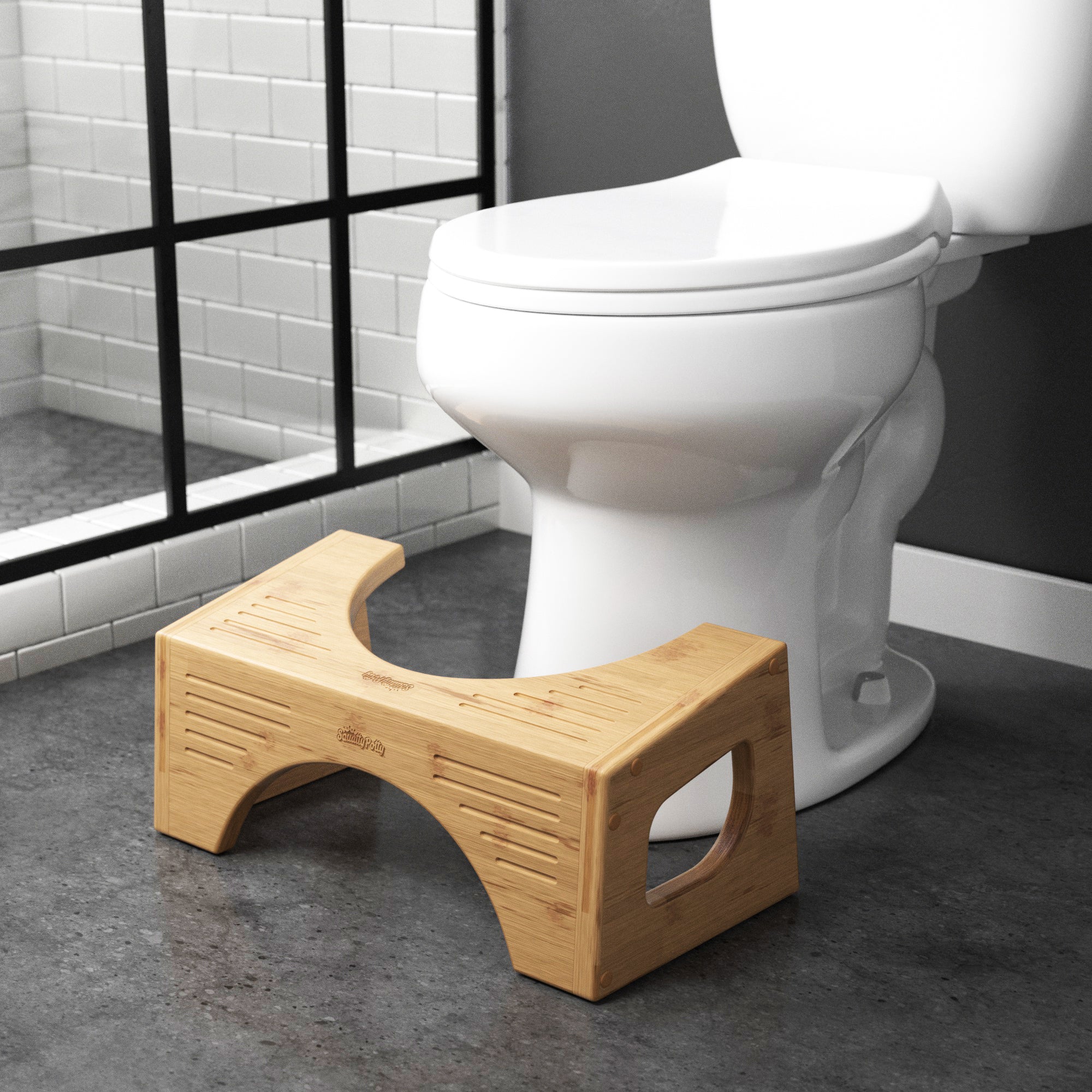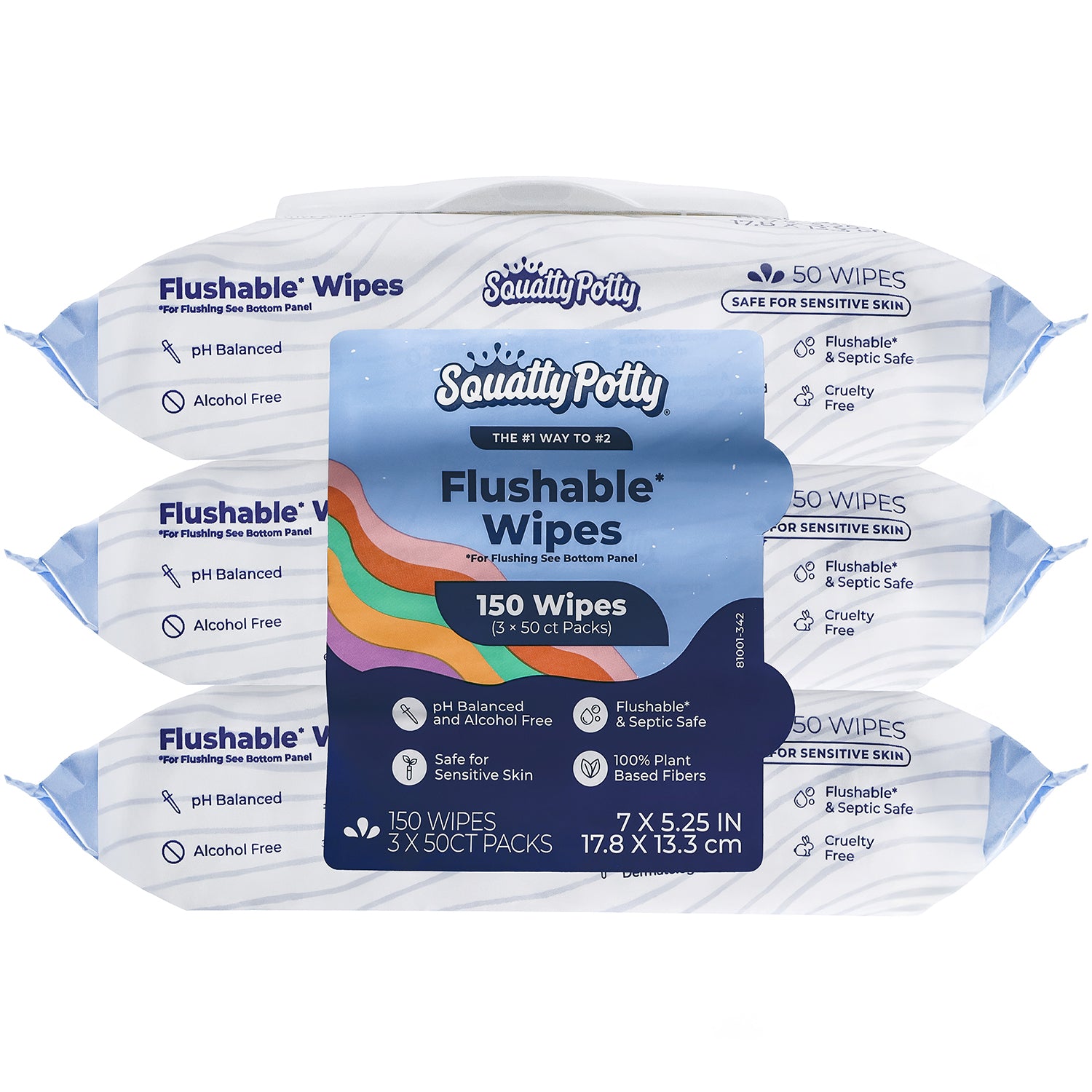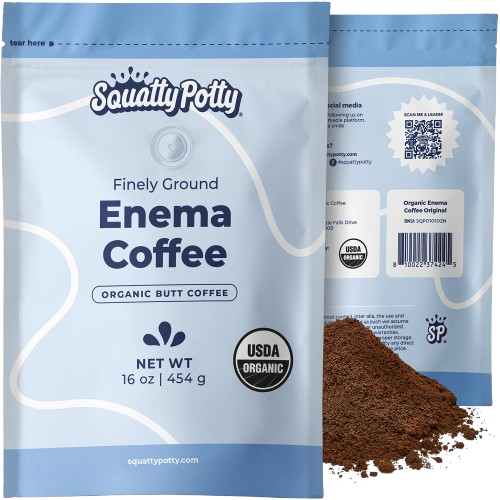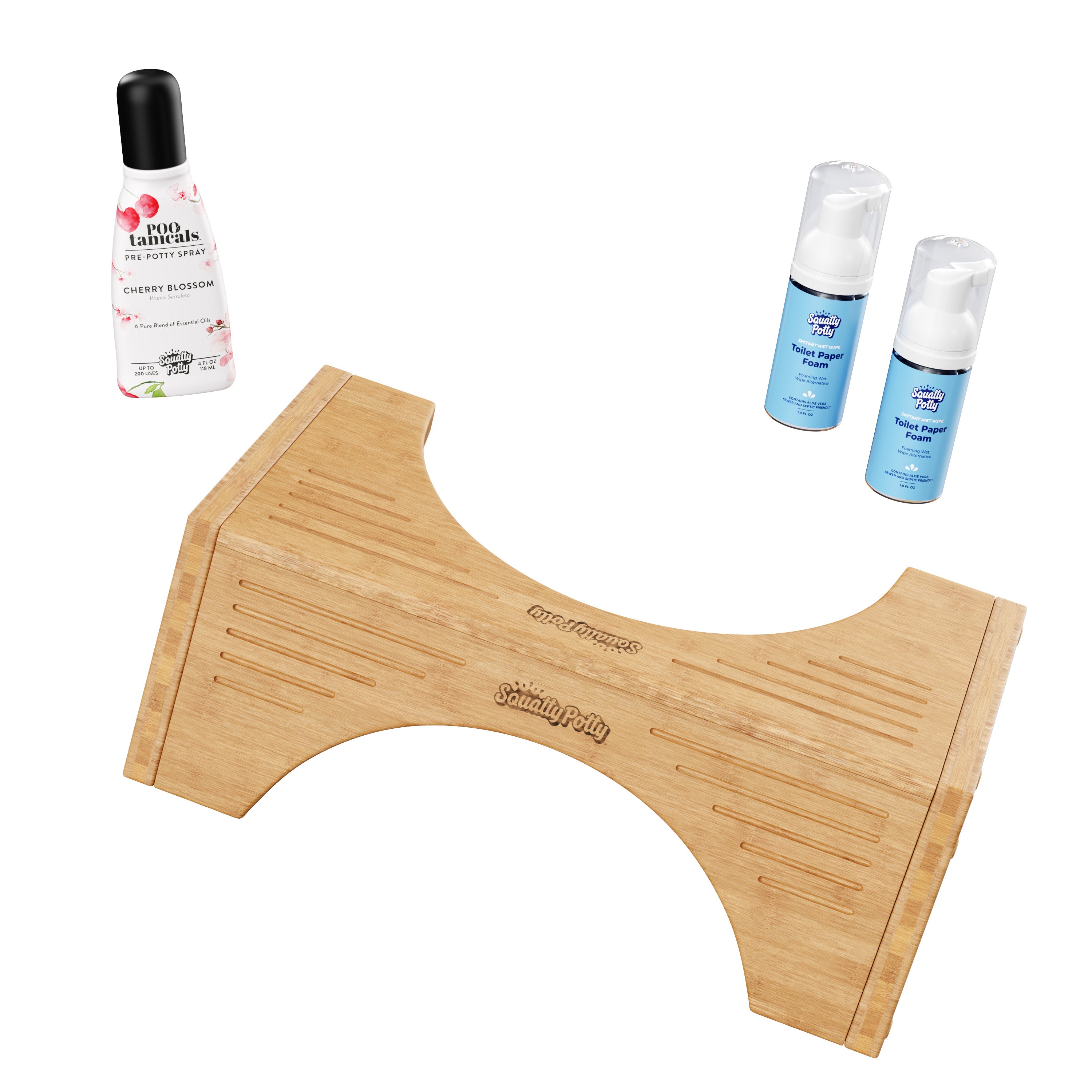Blog
Ever wondered why you get butterflies in your stomach when you feel nervous or stressed?
It is thought that, as well as nutrition and lifestyle choices, our state of mind may actually impact our digestive system. Interestingly, it seems the deal works both ways: scientists are increasingly convinced that the contents of our digestive system may have a major impact on our state of mind. Did you know: that 100 trillion microorganisms live in your intestines: that’s more than 10 times the number of human cells in your body. Just like weeds compete with flowers for space and nutrients in a garden, ‘bad’ bacteria compete with ‘good’ bacteria inside the gut. If the gut environment is healthy, ‘bad’ bacteria struggle to flourish. We obviously want the good bacteria and all of their powerful benefits. There are Clostridium Butricum- which produces important fatty acids, Bifidobacteria- which produces vitamins, and Lactobacilli- which boosts immunity and protects against carcinogens! A healthy gut environment stimulates the digestive process, aiding the absorption of nutrients, and helps provide gut wall resistance. A healthy gut environment prevents growth of harmful, pathogenic bacteria, and breaks down poorly digested food. In return for their hard work, the bacteria get to thrive in a safe, nutrient-rich environment. Wondering how the gut affects the brain? Over 100 years ago, Russian immunologist, Elie Metchnikoff, proposed that a healthy gut environment could help combat senility and suggested that the good bacteria found in yogurt would increase a person’s longevity. Today, researchers are beginning to understand the role of gut bacteria in immunological, metabolic, and neurological diseases: what we eat can alter the composition and function of the gut bacteria and this has an effect not only on the metabolism, but also on the brain function. Who knew the two were so close! The gut and the brain communicate more so than you’d think. Microbial compounds communicate with the brain via the vagus nerve, the largest nerve in the body. Gut microbes interact with the immune system, which communicates with the brain. The gut releases hormones and neuroactive compounds which travel through the blood stream. They communicate so much so that scientists have named the gut the “second brain”! Did you know: that the digestive tract forms over 70% of the the body’s immune system? Or that the nervous system of the gut contains more neurons than the entire spinal cord or that it’s able to regulate itself without brain interaction? So, how does the brain affect the gut? The brain has a direct effect on the digestive tract. In fact, the very thought of eating can stimulate salivary glands and release gastric juices which help prepare for digestion. Once food reaches the stomach, receptors send their own signals. These signals cause the release of more gastric juice and muscular contractions. When you have eaten enough, the digestive tract releases satiety hormones which signal to the brain that the person is no longer hungry. That’s your gut giving feedback to your brain! As you’ve probably experienced, your gastrointestinal tract is sensitive to emotion, stress, anxiety, and depression. Fear or sadness can make you feel nausea or have loss of appetite, whereas love can give you the feeling that “butterflies are in your stomach”. Now, what can you do with all of this information? Here are some tips to a healthier mind & a healthier gut: Balancing the mind: As we have seen, the gut is sensitive to our emotions and our state of mind. There have been a few studies to prevent anxiety and handle stress. Take time to quiet your mind and meditate. The Dalian University of Technology in China did 74 meditation trials at Johns Hopkins University in Baltimore on mindfulness meditation. They found that five 20-minute sessions of meditation reduced the amount of cortisol that was released in response to the stress test. Squat to eliminate.Relaxing the muscle around your colon is crucial in full elimination. To do so comfortable, use a Squatty Potty. An average American can have up to twenty pounds (I repeat, twenty pounds!) of stool AKA, toxic waste in their digestive system. Squatting to eliminate can allow your body a complete elimination and prevent an unhealthy gut. Take time for restful sleep.Studies at the University of Pennsylvania found that 4-5 hours of sleep at night for one week resulted in participants feeling more stressed, angry, sad, and mentally exhausted. When resuming normal sleep patterns, participants reported a dramatic improvement in mood. Engage in daily exercise.The University of Georgia found that regular exercise reduced patient anxiety by 20%. Exercise sessions greater than 30 minutes were better at reducing anxiety than shorter sessions. And of course, follow the Squatty Potty motto: healthy colon, happy life!
Learn moreStinky Poo: Why It Reeks and What You Can Do About It
Nobody expects poop to smell good, but sometimes it smells so bad you expect to hear about it on the six o’clock news. It’s worse if it’s your own, but even worse when you drop the stink bomb in a public restroom or at a friend’s party when people are lining up to use the restroom. Oh, the shame! The good news is that you can make your poop less stinky and have more satisfying eliminations along the way. Eating healthier, getting your gut checked, and using a toilet stool to unkink your colon are easy ways you can help quell the smell. We’ve done some research to reveal the reasons your poop stinks and how you can make the stench of your waste go from woeful to wonderful. Let us help you make and take more pleasant smelling poops. Squat More The science is in—the most effective and efficient way to poop is to position yourself in a natural squatting position. Pooping with your feet flat on the floor can lead to a kink in your intestines, which can cause major blockages. Clogs from kinks can result in the buildup of bacteria in the digestive tract. This bacteria is often the culprit of nasty odors in your waste.Using a specially designed toilet stool, helps undo the kink in your digestive system without any extra effort on your end, so you can take healthier smelling poops. Not sure which toilet stool is right for you? Use our guide to find the best stool for you. Shop Stools Eat Less Remember, what goes in must come out. The more you eat in excess of what your body needs, the uglier it gets on the other end. If you commonly feel bloated after eating, you may be consuming more food than your body can comfortably digest. Here are a few suggestions on how to cut back: Eat 10 percent less across the board. Serve yourself smaller portions, and don’t come back for seconds. Eat more, smaller meals throughout the day. Stop eating two hours before bedtime. Consume Less Sulfur-Rich Food Sulfur is an essential mineral, so you don’t want to eliminate it from your diet, but if you eat a lot of sulfur-rich foods, the excess sulfur may be making your stool more odoriferous than normal. Here’s a list of sulfur-rich foods to try and avoid: Arugula Coconut milk, juice, and oil Cruciferous vegetables (bok choy, broccoli, cabbage, cauliflower, horseradish, kale, kohlrabi, mustard leaves, radish, turnips, watercress) Dairy (except butter) Dried fruits Eggs Garlic Legumes (beans) Cut Back on Processed Foods Processed foods contain synthetic ingredients, some of which your body may be ill-equipped to digest. Switching to a whole-food diet is the easiest, most complete solution. Otherwise, read food labels and choose only those packaged foods that use all-natural ingredients. Sticking to an all-natural diet won’t be as easy as propping your feet up on a toilet stool, but it can have a significant impact on the stench of your stool. Trim the Fat Excessive dietary fat can lead to undigested fat in the stool — a condition referred to as steatorrhea. If your body doesn’t produce enough lipase (a fat-digesting enzyme), the undigested fat putrefies as it makes its way through the colon, producing a foul-smelling odor. Of course, your body needs fat in order to function, but try to eliminate trans fats and scale back your consumption of saturated fat. Trans fats (also referred to as hydrogenated and partially-hydrogenated fats and oils) are common in fried foods, bakery items, chips, crackers, and other yummy treats that are bad for you. You get saturated fat primarily from animal products, including red meat, pork, poultry skin, full-fat dairy products, mayonnaise, and eggs. Just like using a toilet stool, cutting back on fat can help eliminate bad bacteria that leads to foul-smelling fecal matter. Get Checked for Lactose Intolerance If you experience diarrhea, nausea, abdominal cramps, bloating, or gas 30 minutes to a couple of hours after consuming dairy (milk or ice cream, for example), you may have lactose intolerance, which is also contributing to your smellier-than-normal poops. With lactose intolerance, your body doesn’t produce sufficient amounts of the lactase enzyme to break down the lactose (a sugar in milk), so the undigested lactose lands in your large intestine where it is fermented by bacteria, a process which produces stinky gas and poop. If you have lactose intolerance, you have three options for dealing with it: Avoid dairy Switch to lactose-free dairy products Take lactase enzyme supplements, such as Lactaid, before consuming dairy Check Your Meds and Supplements Medications may increase levels of sulfur and other chemicals in your body that produce stinky stools. Sulfur drugs, such as Bactrim, are used to treat bacterial infections, and all diuretics except spironolactone can increase sulfur levels in your system. Here’s a short list of supplements that may also increase sulfur levels: Alpha lipoic acid Chondroitin sulfate DMPS DMSO Epsom salts Garlic Glucosamine sulfate Magnesium sulfate Milk thistle MSM N-acetyl cysteine (NAC) Taurine Review all medications and supplements you take with your healthcare provider to identify any substances that may be causing problems. Spray Before You Squat If you have only the occasional stinky poo, don’t be alarmed. Temporary changes in diet and how you feel overall can have a short-term impact on the odors you emanate. Just be prepared. Along with their collection of toilet stools, Squatty Potty offers several Pootanical Sprays that can help turn foul into fragrant. A few puffs of an aromatic pre-potty spray can trap bathroom odors beneath your toilet's water line. Just spray before you go, and no one has to know. Keeping one in every bathroom can help leave your home smelling fresh. Shop Pre-Potty Sprays Get Your Gut Checked If nothing you’ve tried to normalize your digestion has worked, consider having your gut health evaluated by a qualified medical professional. What you consider to be a problem with overly odoriferous stools may be a symptom of a more serious underlying health condition, such as: Food intolerance Insufficient production of stomach acid Insufficient levels of digestive enzymes Imbalanced intestinal flora — the bacteria and other microbes that inhabit your gut and aid in digestion (see “Restoring Intestinal Flora Leads to a Healthy Gut and Happy Poop“) Irritable bowel syndrome (IBS) Ulcerative colitis Celiac disease Crohn’s disease Giardiasis The takeaway lesson here is that stinky poo is no laughing matter. Don’t dismiss what may be a valuable warning sign of a serious underlying condition. Have your issues checked out by a medical professional who can identify and treat the underlying cause. The Final Turd Poop will always have a smell, but using these simple tips and tricks to take your waste from nasty to normal in a flush. Watching your diet, checking your medications, and assuming a squatting position with a Squatty Potty are all effective ways to keep your poop smelling pleasant. Shop Stools Disclaimer: This blog post on odors associated with feces of the human digestive system, provides general information and discussion about medical issues and health-related subject matter. The words and other content provided in this post, and in any linked materials, are not intended and should not be construed as medical advice. If you or any other person has a medical concern, consult with an appropriately licensed physician or other health care professional immediately and do not rely on the information presented in this post. Never disregard professional medical advice or delay in seeking it because of something you have read in this blog post or in any linked materials. If you think you may have a medical emergency, call your doctor or 911 immediately.
Learn moreThe Ultimate List of Foods that Bind vs. Those Foods that Loosen Stools
When people aren’t pooping enough per day, or their stools are too hard or soft, they’re bound to get grumpy. Factors including poor diet, lack of exercise, and not using proper pooping posture can cause irritable bowels and behavior. Regardless of the cause, the connection between digestive issues and mood has been well documented. Many doctors have begun to refer to the gut as the body’s “second brain” since the neurons that line the gut form such an extensive and complex network. Scientific American published an article about this topic in 2010 entitled Think Twice: How the Gut’s ‘Second Brain’ Influences Mood and Well-Being. The foods you consume are essential in providing the nutrition your body requires and feeding your gut microbes what they need to thrive and maintain a healthy balance. Eating healthy food and using a toilet stool are simple things you can do to enjoy more satisfying poops and alleviate gastrointestinal problems. Shop Stools In line with our mission to help the world poop better, we published a blog post entitled “10 Tips for More Predictable Poops.” In that post, we include short lists of foods that bind and foods that loosen stools. In this post, we expand those lists. Note: Remember that regulating bowel movements involves attention to several factors, including diet, exercise, fluid intake, lifestyle, and maintaining healthy intestinal flora. Refer to our article Restoring Intestinal Floral Leads to a Healthy Gut and Happy Poop for more information on the topic. Foods That Bind When you suffer from diarrhea, your doctor will likely recommend a temporary shift to the BRAT diet: bananas, rice, applesauce (not apples), and toast. Any bland, low-fat, low-fiber diet is likely to help alleviate diarrhea. By bland, low-fat, low-fiber, we’re referring to foods such as white bread, peeled potatoes, peeled and cooked fruit, white pasta, and rice.Another way to approach this is to avoid spicy, fatty, fried, or raw food and any food that is difficult to chew. Implementing these dietary restrictions and adding a Squatty Potty into your toilet routine can lead to smoother, healthier movements. Using a specially designed toilet stool, helps undo the kink in your digestive system without any extra effort on your end. Not sure which toilet stool is suitable for you? Use our guide to find the stool that will work best for your behind. Choosing The Right Squatty Potty For You A third approach is to stay disciplined and eat foods from the following lists. Foods made from refined, white flour Hot and cold cereals Pretzels Waffles Pancakes Cookies Crackers Cakes Rice White rice Rice cakes Rice crackers Low-fat meats Baked or broiled chicken without the skin Lean beef Fish Turkey Certain dairy products (but avoid if you are lactose intolerant) Low-fat yogurt Hard cheeses Low-fat milk Low-fiber veggies Green beans Carrots (preferably boiled) Peeled potatoes Peeled zucchini Mushrooms Asparagus tips Acorn squash Low-fiber fruits Bananas Applesauce Other peeled and cooked fruits Clear fruit juices (preferably diluted) Other foods worthy of mention Peanut butter Gelatin (Jell-O) Popsicles Fruit juices (preferably diluted) Clear broth Foods That Fluff Constipated? Your doctor will likely recommend increasing your fluid intake and consuming high-fiber foods to make your stools more fluffy. Yes, we said fluffy! Your doctor may also advise you to take a fiber supplement, such as psyllium, the main ingredient in Citrucel and Metamucil. Drinking more water, eating more fiber, and utilizing a Squatty Potty to ease constraints on your digestive tract will help your poo slide right out of you. Shop Squatty Potties The following foods are high in fiber and often have a high water content, which can also help constipation. Note: We have intentionally omitted foods that loosen stools but may irritate your gut, such as greasy or fried foods, high-fat meats, coffee (which is acidic), and chocolate. Grains Corn Whole grains Whole-grain breads and pastas Barley Bran Rye bread Popcorn (‘poopcorn,’ anyone?) Oatmeal High-fiber cereal Brown rice (yes, some types of rice can bind and loosen stools) Legumes (beans) Soybeans Navy beans Pinto beans Black beans Split peas Lentils Mung beans Chickpeas Kidney beans Lima beans Great northern beans Black-eyed peas (the food, not the band) Baked beans Hummus Tofu Veggies Artichokes Green peas Parsnips Collard greens Turnip greens Lettuce (iceberg’s not the best) Brussels sprouts Kale Broccoli Sweet potatoes Okra Butternut squash Cabbage Spinach Fruits and berries Prunes, raisins, and other dried fruits Prune juice Kiwis Apples Pears Oranges Peaches Persimmons Figs Berries (especially blueberries) Nuts and seeds Almonds Cashews Walnuts Pecans Sunflower seeds Pistachios Pumpkin seeds Chia seeds Flaxseed (ground) Foods That Restore and Support Regular Bowel Movements Some foods perform double-duty, helping regulate bowel movements and prevent diarrhea and constipation. These foods deserve some special attention. Adding supercharged probiotic and prebiotic foods before propping your legs up on a bathroom stool will allow your colon to straighten and your waste to come out cleaner. Pooping with your feet on the ground can cause a kink in your intestinal tract, which can lead to disruptions. Squatty Potty undoes this kink so you can do your business and get on with your day. Probiotic foods Probiotic foods contain live cultures of bacteria and yeasts that are gut-friendly. The following foods contain probiotics: Live-cultured yogurt Kefir Kimchi Sauerkraut Pickles Natto Tempeh Miso Prebiotic foods Prebiotic foods contain fiber that makes its way to the large intestine largely undigested, where it feeds microbes that promote regularity. Consider it fertilizer for your gut flora. The following foods are considered good prebiotics: Chicory root Jerusalem artichoke Dandelion greens Garlic Leeks Onions Asparagus Avocado Kiwi Aloe Vera juice Unfiltered apple cider vinegar The Final TurdIn addition to consuming the healthy foods from the list above, assuming a squatting position using a toilet stool can help you make and take better bowel movements. While we can’t make you add these foods to your grocery list, a Squatty Potty can help you enjoy more satisfying bathroom experiences. Shop Stools Disclaimer: This blog post on foods that bind vs. those that loosen stools provides general information and discussion about medical issues and health-related subject matter. The words and other content provided in this post and in any linked materials are not intended and should not be construed as medical advice. If you or any other person has a medical concern, consult with an appropriately licensed physician or other health care professional immediately. Do not rely on the information presented in this post. Never disregard professional medical advice or delay seeking it because of something you have read in this blog post or in any linked materials. If you think you may have a medical emergency, call your doctor or 911 immediately.
Learn moreTraveler’s Constipation: Why Can’t I Poop when I Travel?
Vacation. Ahhh! Spahhh! Yeehaaa! But have you noticed that when you’re on vacation, perhaps even for brief weekend respite, you feel BLAHHH?! Traffic was flowing smoothly until you packed your bags and headed for the airport. Now you have gridlock of the gut. The poop train is frozen to the tracks and nothing you do can coax it to leave the station. What the filibuster?! Pooping away from home can be a huge challenge due to numerous factors, including dietary changes, dehydration, stress, or even an irrational reluctance to use deplorable public restrooms or a bathroom that simply doesn’t feel right to you. We discuss the role anxiety plays in negatively impacting the elimination process in a previous post, “Don’t Get Your Colon in a Knot: The Anxiety-Pooping Connection.” In that post, we cover two common elimination issues triggered by anxiety — diarrhea and constipation. Here, we focus on constipation, specifically traveler’s constipation. 1. Avoid Traveler’s Constipation by Watching What You Eat A key to winning the battle of the bowels, especially when you’re on vacation or away from home, is to take preemptive and unrelenting action. It’s much harder to restore the flow than to maintain it, so don’t wait till you’re backed up. Consider packing your gut before your bags, and by this we don’t mean over-packing; you may even want to lighten the load by eating a little less. What we do suggest is that you pay at least as much attention to what you eat before a trip as you do when deciding what to pack. Here are a few specific suggestions regarding food and beverages to consume before you travel: Up your fluid intake. Traveling, especially by plane, tends to dehydrate you. Being more active dehydrates you. Lying in the sun dehydrates you. Well, you get the idea. And when you travel, any daily routines you normally follow, including your drinking habits, may be disrupted. Try your best to keep the fluids flowing. Although all fluids count toward your fluid intake, water is best. Limit caffeine and alcohol consumption. No, we don’t expect you to be canonized on vacation. The whole point of vacation is to live large. We’re talking about prior to departure. However, when you’re living the high life, be sure to follow our first suggestion and drink more water. Within moderation you should limit both alcohol and caffeine. Eat foods that loosen stools and promote regularity and avoid those that bind. Again, we’re talking here about prior to departure. When you’re away from home, you eat what looks good or what’s set in front of you. However, you can usually still pile your plate with more veggies and healthy whole grains. See our most recent post The Ultimate List of Foods that Bind vs. Those Foods that Loosen Stools. Take a probiotic. Your poop contains bacteria, which retains water and, with the addition of fiber, makes your poop like soft, fluffy clouds that are easier to pass. Most people can benefit from taking a probiotic or eating foods that contain probiotics, such as yogurt, kefir, and sauerkraut. But even if you don’t consume probiotics regularly, consider starting on them before you leave on your trip and taking them for the duration of your trip. Of course, we have just the thing — Good Move! our natural colon-care formula. (Note: Always check with a medical doctor before attempting any new dietary regime or products.) 2. Maintain Your Poop Schedule . . . as Much as Humanly Possible When you’re on the road, your biological clock gets all out of whack (especially if you cross time zones), and your normal rhythms and routines are disrupted. Make a mental note of when you usually eat, drink, sleep, and poop, and when you travel, either try to maintain your schedule or ease into a new daily routine. Your body will adapt, but it takes time. Tip: According to the National Sleep Foundation (see “Jet Lag and Sleep“), you can minimize the side effects of jet lag and reset your biological clock by doing the following: Select a flight that arrives early in the evening, and the night you arrive stay up until 10pm local time. A few days prior to departure, go to bed and get up earlier when traveling eastward or later when traveling westward. When you depart, set your watch (and smartphone) for the destination time zone. Get plenty of natural light when you reach your destination; that is, get out and about during the day. Avoid alcohol and caffeine three hours before bedtime. Avoid heavy meals. That’s heavy meals, not heavy metals, but you should avoid those, too. Avoid strenuous exercise near bedtime. Use earplugs and a blindfold to block out sensory stimulation when trying to sleep. 3. Relax and Don’t Forget to Breathe Although time away from home is supposed to be relaxing and restorative, it also has a tendency to crank up the stress, which can contribute to constipation. As you plan and prepare for your trip and throughout the course of your travels, take 10 to 15 minutes a couple times a day to really relax. All you need to do is sit still, go limp, close your eyes, clear your mind, and remain in that state of relaxation for 10 to 15 minutes. 4. Pack the Big Guns (And Maybe Some Backup) Hopefully, you’ll follow our suggestions and experience no log jams, so to speak. Just in case, pack the big guns — a fiber supplement, a laxative, and your foldable, portable Porta-Squatty. Just be sure not to overdo it with the fiber supplement and laxative. One extreme can be just as bad, or worse, than the other. In addition, taking supplements and laxatives when you don’t really need them can trigger a cycle of constipation and diarrhea, making it difficult to restore regularity. Pack the big guns but use them only when absolutely necessary. You’re usually better off just eating less or fasting for several hours and letting your gut adapt to the situation. Click here to get your own travel Squatty Potty. – – – – – – – – Disclaimer: This blog post on traveler’s constipation provides general information and discussion about medical issues and health-related subject matter. The words and other content provided in this post, and in any linked materials, are not intended and should not be construed as medical advice. If you or any other person has a medical concern, consult with an appropriately licensed physician or other health care professional immediately and do not rely on the information presented in this post. Never disregard professional medical advice or delay in seeking it because of something you have read in this blog post or in any linked materials. If you think you may have a medical emergency, call your doctor or 911 immediately.
Learn moreWhy Bidet?
Whether it’s Bryan Cranston and Keegan-Michael Key in the 2016 hit comedy “Why Him,” Larry the Cable Guy as the voice of Mater (the Southern-accented tow truck from Radiator Springs) in 2011’s “Cars 2,” or Paul Hogan in the 1986 classic “Crocodile Dundee,” it’s hard not to laugh at the antics that ensue on screen when a bidet shows up at the movies. But the bidet (pronounced “bee-day”), which is said to have been invented by 17th century French furniture makers, is more than just a punchline or casual amusement. It’s essentially a bathroom sink for washing your bottom (or your derriere, if you want to stick with French) and other private parts. The device carries the same name as that used in France to refer to a small, stout pony. Why? Because early designs of the bidet required you to squat awkwardly over it during its use. Very popular in Southern European countries, particularly France, Italy, Spain, and Portugal, the bidet is growing in popularity in the U.S. and Canada. In the not-so-good-old days, bidets were exclusively standalone units, separate from the toilet, and they functioned much likes sinks. You’d squat over the bidet and splash water up to the areas that needed washing and subsequent rinsing. Modern designs provide a means to spray the water where needed. Some can even warm the water, and high-end models include air dryers. Although bidets were originally designed to be standalone units, separate from the toilet (another French-derived term, by the way), you can now find devices that convert a standard toilet into a dual-purpose toilet/bidet. Once such device is our ReFresh-It Bidet, which includes a small, built-in lever you can use to direct the stream of water to wherever you need it instead of having to shift and shimmy your way into position. Regardless of the make and model, all bidets have several common benefits, as we showcase in this post. Enhanced Hygiene If you get poop on your hands (or on any other part of your body), you don’t just wipe it off with toilet paper or a paper towel — you wash it, and you probably scrub it, with soap and water. But after doing our business, we often resort to simply wiping with paper. Some of us have stepped up our post-poop hygiene by using toilet wipes, which is certainly an improvement, but, unless you use the flushable variety, you’re left with an additional paper product that’s inconvenient and potentially embarrassing to dispose of. Besides, if you have a tender derriere, you’re well-advised not to use wipes that contain soaps, fragrances, alcohol, or other harsh chemicals. The bidet enables you to rinse off with plain water. Then, you can typically dry yourself with a single wipe or a few gentle pats. Economical You probably pay more for toilet paper than you realize, especially if you have a large family or someone in the family who uses a half roll simply to tidy up (every family has one). Using a bidet, you can slash your toilet paper bill. Think about it. If you pay $20 for toilet paper every month, that’s $240 a year. Trim your use by 75 percent, and you just saved yourself $180. That’s $180 you’re literally flushing down the toilet! Environmentally Friendly According to Southeast Green, the average American uses 50 pounds of toilet paper per year (57 squares daily). The average per capita use among Western European countries is about half that, and among the new European countries bordering the Baltic Sea, the average per capita use is only about 8.5 pounds — less than one fifth of that in the U.S. All the toilet paper you ultimately flush down the toilet requires cutting down trees to produce, and then it ends up as environmental waste via a sewage or septic system. Using less toilet paper saves trees and reduces waste. Easier on Your Bottom Tender, itchy bottom? Hemorrhoids? Anal fissures? Many doctors will offer the contradictory advice to clean more thoroughly, but wipe less and not as vigorously. They may recommend dampening your toilet paper prior to wiping (ever tried that? sheesh!) or suggest using water-based or natural baby wipes. The ideal solution? You guessed it — a bidet. With a bidet, your raw rump gets a thorough, yet gentle, cleaning. Easier on Your Toilet When’s the last time you had to take a plunger to your toilet? You can probably remember the day. People who use bidets can’t. It’s rarely the poop that clogs the toilet. More often than not, it’s the toilet paper. And with the increased prevalence of low-flow toilets, the problem has only gotten worse. Use less toilet paper, and you can do away with that ugly, bacteria-infested plunger you’re trying to hide behind the toilet, or at least relegate it to the garage, where you can reach it for the rare emergency — perhaps a less cultured guest who hasn’t been educated on the benefits of the bidet. Septic-Safe If you’re on septic instead of municipal sewer system, you probably fret about buying the right toilet paper and being careful about the other stuff you send down your pipes. Too much of the wrong stuff will destroy your system or at least upset its delicate balance and perhaps lead to the added expense of having your tank pumped more frequently. With a bidet, you still need to be careful to buy the right toilet paper, but you can significantly reduce the amount of it that ends up in your tank. Fun (or Funny) to Use When you first encounter a bidet, as Cranston’s character did in “Why Him,” you may think it’s a practical joke — having a stream of water squirted up your butt doesn’t exactly sound like a pleasant experience, especially if it’s a cold stream of water. Not only that, but if you’re not in the right place at the right time, you might just spray your face or one of the bathroom walls, as Hogan’s character almost did in “Crocodile Dundee.” Yes, a bidet can be loads of fun. If you have a funny story about your first encounter with a bidet, please post it here for all to enjoy. In addition to earning bragging rights for the best story posted, we’ll send a free Squatty Potty t-shirt and ReFresh-It Bidet to the person who contributes the best of the best.
Learn morePaleo Poopers: How to Deal with Caveman Constipation
You switched to a paleo diet — lots of veggies, a moderate amount of meat and eggs, a small amount of fruit for dessert, and perhaps some dairy. Good for you. You’re probably healthier than ever before. And now that you’ve gotten off the roller coaster of energy spikes and dips from consuming too much sugar and starch, you’re probably feeling better than ever. Trouble is, now you’re constipated. If this diet is healthier, why isn’t it making you poop healthier, too? And, more importantly, what can you do about it? What’s Causing My Constipation? Whenever you drastically change the way you eat, your body needs time to transition how it functions. With the paleo meal plan and lifestyle, the transition may be even more challenging, for several reasons: You’re switching your fuel source from sugar (and other simple carbs, such as bread and pasta) to fat. You’re probably eating less fiber, especially if you’re loading up on meat and not so much on vegetables or if you’ve switched to a low-carb paleo diet, avoiding certain fruits and vegetables, such as sweet potatoes. You’re probably consuming fewer calories, so you have less waste — less poop. What Can I Do About It? Fortunately, you can usually cure caveman constipation without giving up your paleo ways. The first step is to understand the composition of healthy poop: 75% water 7.5% undigested fiber and solidified components of digestive juices 7.5% bacteria 2.5% to 5% fat 2.5% to 5% inorganic matter .5% to .75% protein To alleviate your constipation, you need to give your body, and the microbes that reside in your lower digestive tract, the nutrients they need to produce the ingredients for healthy poops: Drink sufficient amounts of fluids. Water is best, but other fluids count, too. Diuretics, such as beverages containing caffeine and alcohol, may be counterproductive. Eat more plants than animals. If you’re loading up on meat, eggs, and dairy and ignoring veggies, fruits, beans, nuts, and seeds, try eating less of the former (animal-based products) and more of the latter (plant-based products). Plant-based foods contain the two types of fiber your body needs: Soluble fiber: Soluble fiber absorbs water and turns into gelatinous mush. It slows the absorption of sugar into your system, bulks up your poop, helps to eliminate toxic waste and maintain a healthy pH (acidity) in the intestines, and nourishes the beneficial microbes in your gut. (For more about feeding the friendly microbes, see our previous post, “Restoring Intestinal Flora Leads to a Healthy Gut and Happy Poop.”) Insoluble fiber: Insoluble fiber is found in vegetables, fruit and potato skins, seeds, and nuts. It retains a lot of water and helps to keep waste moving through the colon and to control and balance pH, but it’s largely un-fermentable, meaning it’s not the greatest food source for your friendly microbes. Take a probiotic. A probiotic consists of live bacteria that can restore or add to your friendly intestinal microbes. You can take a probiotic daily, but more importantly, take a probiotic for several weeks after taking an antibiotic. Probiotics are present in in some foods, including live-cultured yogurt, kefir, sauerkraut, kimchi, pickles, miso, and tempeh, and they’re available as supplements. Take a prebiotic daily. A prebiotic is soluble fiber that nourishes the microbes already in your digestive tract, in addition to delivering all the other benefits of soluble fiber. Prebiotics are contained in many foods, including beans, vegetables (especially Brussels sprouts, turnips, sweet potatoes, squash, and asparagus), fruits (especially apricots, grapefruit, oranges, and mangoes), nuts, and seeds. You can also buy prebiotics as supplements, typically psyllium. Make sure you’re getting enough potassium and magnesium. If you switched to a low-carb paleo diet, you may be avoiding some of the best sources of potassium, including bananas and sweet potatoes. Taking a good multi-vitamin that contains potassium and magnesium, both of which support motility (the contraction of muscles that mix and propel contents in the gastrointestinal tract), may help. However, avoid taking massive amounts of potassium or magnesium, because doing so can lead to imbalances that cause other health problems. Be patient. Give your body some time to adjust to the paleo diet and to any changes you make, including upping your fiber intake and taking a probiotic. A paleo diet is healthier than the Standard American Diet (SAD), but your body needs time to adjust. If you’re currently following a paleo diet or you tried it and decided it wasn’t for you, please share your experience and insights. Did it make you constipated? If so, what did you try to alleviate the constipation? What was most or least helpful? If you tried the paleo diet and then returned to a more “normal” diet, why did you switch back? encouragement, and information. Let us know how you approached this condition — what helped and what didn’t. Help shorten the journey from illness to wellness for others! – – – – – – – – Disclaimer: This blog post on the paleo diet provides general information and discussion about medical issues and health-related subject matter. The words and other content provided in this post, and in any linked materials, are not intended and should not be construed as medical advice. If you or any other person has a medical concern, consult with an appropriately licensed physician or other health care professional immediately and do not rely on the information presented in this post. Never disregard professional medical advice or delay in seeking it because of something you have read in this blog post or in any linked materials. If you think you may have a medical emergency, call your doctor or 911 immediately.
Learn more10 Tips for More Predictable Poops
Irregularity got you down? Do your poops seem to experience chronic flight delays? Do they get hung up in the morning’s rush hour traffic? Do they come out soupy one day and like adobe bricks the next? Well, we can help with that. Here we offer ten suggestions to achieving healthier, more predictable poops. It’s all about consistency — both in timing and texture. Follow these 10 suggestions, and you’ll be well on your way to poops that move down the tracks as smoothly as Japanese maglev trains. Start by Keeping Your Eyes on the Goal When we say “regular,” what does that mean, exactly? What’s normal? What’s healthy? Fortunately, doctors have been examining bowel movements and stool for millennia to diagnose illness. What have they concluded? Generally speaking, “normal” means pooping one to three times daily, and, according to traditional Chinese medicine (TCM), healthy stools are medium brown floaters with little or no sheen. Researchers at the Bristol Royal Infirmary — part of a dynamic and thriving group of hospitals in the heart of Bristol, England — have developed a more systematic gauge for judging the consistency of stools called the Bristol Stool Form or BSF scale, shown below. According to the BSF, stool types 1-3 are too hard, types 4 and 5 are just right, and types 6 and 7 are too soft. Unfortunately, the BSF doesn’t include anything about color, scent, or density (whether it floats or sinks), but it’s a pretty good gauge of whether you’re consuming enough water and fiber and whether you have some sort of intestinal infections or imbalances. So, if you’re pooping one to three times daily, and you’re squeezing out snakes or soft blobs, you’re in good shape. No need to change anything. On the other hand, if you’re pooping too often or less frequently than once a day, and if you’re laying bricks or squirting Hershey syrup, the following suggestions can remedy the situation. Use Common Sense: Listen to Your Body… and Your Doctor The suggestions we offer here are just that: suggestions. We are not your doctor, and we aren’t privy to details about your body, diet, lifestyle, and frequency or consistency of your poops. Tune in to what your body tells you. If you up your fiber intake, for example, and start experiencing loose stools, the added fiber may be doing more harm than good. Try different methods, choose what works, and ignore the rest. And always consult with your doctor over any serious or persistent problems. Consume Enough Fiber Hard poops typically indicate three problems. You’re not getting enough: Fiber (prebiotics) Water Probiotics Let’s start with fiber. According to the National Academies Institute of Medicine Dietary Reference Intake (DRI) for macronutrients, the average woman should be eating 21-26 grams, and the average man should be consuming 30-38 grams daily, depending on their age. Most people consume only about 15 grams of total fiber daily. You can boost your fiber intake by eating more high-fiber foods, including vegetables, fruits, nuts, legumes (beans), and whole grains. All of these sources of fiber contain water, so if you’re getting your fiber through food, you’re also boosting your water intake. Whether you need to take a fiber supplement is something to discuss with your doctor. Too much fiber can cause problems, as well, especially if you’re not consuming enough water. Drink Enough Water The standard advice on water consumption is to drink eight 8-ounce glasses of water daily; that’s 64 ounces, a half-gallon. According to the DRI, you need even more than that; women should be consuming about 2.7 liters (about three quarts) of water daily, and men should be drinking about 3.7 liters (just shy of a gallon). That’s a lot of water! Warning: Many people misinterpret that recommendation by failing to account for the water in foods and beverages. Water in juice, milk, coffee, tea, soda, and so on, also count toward your daily water consumption, as does the water contained in solid foods, including vegetables, fruits, nuts, whole grains, meat, cheese, and yogurt. Yes, drinking water is better for you than drinking soda, but if you’re struggling to drink a gallon of water daily, and you’re peeing all the time, you’re probably overdoing it. Supplement with Pre- and Probiotics Dry stools are often an indication of an imbalance of intestinal flora or gut bacteria and yeasts. These microorganisms in your intestines help to digest your food. They also retain the water that softens stool. An overgrowth of harmful bacteria, viruses, and fungi can interfere with digestion and cause a host of health problems that impact bowel movements or make the stool too hard or too soft. Prebiotics (dietary fiber) and probiotics (beneficial live bacteria and yeast cultures) can help restore a healthy balance. For details, see our recent blog post, “Restoring Intestinal Flora Leads to a Healthy Gut and Happy Poop.” Embrace the Foods That Bind If your stools are runny, consider a temporary shift to the BRAT diet: Bananas Rice Applesauce (not apples) Toast Other foods that can be helpful in alleviating temporary bouts of diarrhea are white bread, peeled potatoes, white pasta, rice, and peanut butter, but any bland, low-fiber foods can help to alleviate diarrhea. Avoid high-fiber foods, such as prunes, berries, cabbage, broccoli, beans, lentils, fatty meats, and greasy foods. Also avoid caffeine, alcohol, sugary drinks, and carbonated beverages. Although the BRAT diet is still recommended by some doctors, it’s only a temporary fix, and it is being phased out. Now, the Academy of Pediatrics recommends that children with mild diarrhea continue to eat a normal diet supplemented with commercially available electrolyte solutions to replace the water and salts lost during diarrhea. If diarrhea is severe or persistent or accompanied by a fever of over 102 degrees Fahrenheit, seek medical attention. Diarrhea can lead to dehydration, which poses a serious health risk. Embrace These Stool-Loosening Foods It’s common knowledge that certain foods, such as prunes, can help you poop, but prunes haven’t cornered the market. Here’s a list of 14 foods to help grease the ol’ poop chute: Beans Kiwi Sweet potatoes Corn and popcorn (poopcorn?) Nuts and seeds Whole grain breads and cereals Prunes, plums, pears, apples Berries Flaxseed Broccoli, green beans, spinach Dried fruit Coffee Yogurt Aloe vera juice And don’t forget the water! Put Your Body in Motion One sure fire way to cure constipation is to take a long jog to somewhere miles away from any toilet. As soon as you’re a safe distance from any convenient dropping point, you will have an uncontrolled urge to do your business. We don’t have any medical studies to support this phenomenon, only plenty of anecdotal evidence. It’s called the “runner trots.” But seriously, according to a study published in the Canadian Journal of Gastroenterology, regular physical activity, not necessarily an exercise regimen, can help with chronic constipation (CC), especially in older people who are less active. As for younger patients, the study concludes that exercise appears “to have little improvement in bowel function unless they engage in vigorous exercise.” The study goes on to state that “Exercise can still be recommended to patients because it improves quality of life and has other health benefits unrelated to CC.” Relax Stress is tough on your entire nervous system, part of which, the enteric nervous system (ENS), is devoted to controlling your digestive tract. For many people, stress contributes to constipation. For others, it gives them the collywobbles (stomach ache) and diarrhea. In an article posted on Harvard Healthbeat entitled “The gut-brain connection,” Editor in Chief Anthony L. Komaroff points out that “the gastrointestinal tract is sensitive to emotion. Anger, anxiety, sadness, elation — all of these feelings (and others) can trigger symptoms in the gut.” In fact, results of a study conducted at the Benson-Henry Institute for Mind Body Medicine at Massachusetts General Hospital (MGH), both Harvard affiliates, show that a nine-week training program that included elicitation of the relaxation response had a “significant impact on clinical symptoms of the gastrointestinal disorders irritable bowel syndrome (IBS) and inflammatory bowel disease (IBD) and on the expression of genes related to inflammation and the body’s response to stress.” (See “Genomic and Clinical Effects Associated with a Relaxation Response Mind-Body Intervention in Patients with Irritable Bowel Syndrome and Inflammatory Bowel Disease” published in PLOS One.) If you’re feeling stressed out and experiencing bowel irregularities, you may want to look into starting a relaxation regimen centered on yoga, mindfulness, tai-chi, or some other deep relaxation technique. Review Your Medications Experiencing chronic constipation or diarrhea? The root cause may be sitting in your medicine cabinet. Many medications can negatively impact digestion, including the little purple pill and its cousins, which are commonly prescribed for acid reflux (heartburn). If you’re having trouble pooping, we urge you to consult with your doctor, who can review your medications (both prescription and over the counter), and help you determine whether one or more of them may be the culprit(s). When You Gotta Go, Go! A busy schedule isn’t the most conducive for regularity. As a result, many people resist the urge to poop when at work or in public. If you’re part of this group, you need to figure out a way to answer the call of nature when it arrives. The fact is, holding it is bad for you. When you resist the urge to poop, your stool is held in your colon, where moisture is extracted from it, and it hardens, causing, you guessed it — constipation. Hold it too long, and your poop can become impacted, your colon can become distended, and its ability to contract impaired. The moral of the story — when you gotta go, go! Squat to Poop Your body is equipped with three muscles to help you choose when to take a seat on the porcelain throne… and when not to: The puborectalis muscle loops around the rectum like a sling, pulling the rectum forward to create a more acute angle between the rectum and the anal canal. When you stand, the muscle crimps the rectum to keep the poop in. When you sit, the muscle relaxes to a certain degree, but it only relaxes fully in the squat position. The internal sphincter is a smooth muscle controlled by enteric neurons — nothing you have any conscious control over. The external sphincter is a skeletal muscle that you can consciously control, as in when you decide to deliver the package. Whether you sit or squat, you consciously relax the puborectalis and external sphincter muscles, but only the squat position fully relaxes the puborectalis muscle to provide a straighter corridor through which your poop can travel. Lesson here? Squat to poop. And we can definitely help with that. Squatty Potty gives you the choice of simulating the squatting position or going full squat over your conventional toilet. The result: A quicker, fuller elimination of poop with little or no conscious effort on your part. Now we’re well aware that discussing poop in public is taboo, but we do it all the time anyway, and we encourage you to do the same… if you feel so inclined. Please share your poop problem and what you have done successfully, or not so successfully, to address the problem. It might just help someone else. – – – – – – – – Disclaimer: This blog post on predictable bowel movements provides general information and discussion about medical issues and health-related subject matter. The words and other content provided in this post, and in any linked materials, are not intended and should not be construed as medical advice. If you or any other person has a medical concern, consult with an appropriately licensed physician or other health care professional immediately and do not rely on the information presented in this post. Never disregard professional medical advice or delay in seeking it because of something you have read in this blog post or in any linked materials. If you think you may have a medical emergency, call your doctor or 911 immediately.
Learn moreeBay Buyer Beware
If you have spent any time shopping on eBay then you know what a mess their website can be sometimes. Well, that mess has now affected Squatty Potty, so we wanted to make sure customers are aware of the problem. Currently if you go to eBay and do a search for Squatty Potty you will see 350+ results. Several of the sellers listed are legitimate third party distributors offering genuine products. However, many are not offering authentic Squatty Potty toilet stools. To ensure you don’t get fooled into buying a knock off, it's best to order directly from Squatty Potty. If you did order from a third party seller and feel like you got ripped off with a counterfeit product, please be sure to contact eBay so they can remove fraudulent sellers. We apologize for any inconvenience and confusion this situation may cause. We’re just trying to look out for you!
Learn moreEncopresis 101 — Understanding Your Child’s Condition
Is your child regularly soiling his underwear even after being successfully potty-trained? If so, your family is probably suffering from one of the most embarrassing and tenacious conditions to afflict children — encopresis (en-kuh-pree-sis) — involuntary defecation — a condition that, left untreated, can follow your child into adulthood. If you’re a parent of a child with encopresis, you don’t have to imagine the psychological impact of encopresis on you and your child. You can’t send your child to school without dreading the possibility of your child passing stool in class or on the playground. You find excuses for your child not to go to friends’ houses for sleepovers. You dread answering the phone when your child is away from home, expecting it to be a call about your son or daughter having “an accident.” You see the frustration, anguish, and shame on your child’s face, as the harder they try to control their bowel movements the more they fail. To make the situation worse, encopresis is a condition nobody likes to disclose or discuss, so families often become increasingly isolated. If you do venture to discuss your situation, you become the cause — other parents unfamiliar with encopresis will assume that you did something wrong when potty training your child. You’re likely to get plenty of unwelcome parenting advice on how to reward your child when he uses the potty and how to enforce consequences when he soils himself — as if soiling oneself isn’t consequence enough! Even some doctors fail to fully understand the problem or provide parents the valuable understanding, insight, and guidance they need to meet the challenge. We’re here to help. Here we bring you up to speed on encopresis — symptoms, causes, and cures. Symptoms of Encopresis The most obvious symptom of encopresis is the soiling of oneself. Other symptoms, according to the Mayo Clinic, include the following: Leakage of stool or liquid stool on underwear, which can be mistaken for diarrhea Constipation with dry, hard stool Passage of large stool that clogs or almost clogs the toilet Avoidance of bowel movements Long periods of time between bowel movements Lack of appetite Abdominal pain Problems with daytime wetting or bedwetting (enuresis) Repeated bladder infections, typically in girls As we point out in a previous post, “10 Tips for More Predictable Poops,” normal pooping involves going one to three times daily and having semi-soft stools that are light brown in appearance. There’s actually a Bristol Stool Chart presented in that post to help you determine whether the consistency of your child’s stool is in the normal range. If your child isn’t having a normal bowel movement at least once a day, or is experiencing one or more of the symptoms described above, consult your child’s doctor for advice. What Causes Encopresis? The primary cause of encopresis is chronic constipation, and the longer a child remains constipated, the worse the condition becomes. At a certain point, the stool can become so impacted in the bowels that it will not move, and the mass continues to grow, stretching (distending) the bowel muscles to the point at which they can no longer contract effectively to push the mass out. The bowels and rectum, which are already lacking in the nerve department lose any “feeling” they have, so the child doesn’t even sense when she “has to go number two.” Softer stool descending through the bowels flows around the existing mass and leaks out, through no fault of the child, soiling the child and her clothes. Yes, it’s disgusting, and your child knows it, but she can do nothing to control it. But what caused the chronic constipation in the first place? Well, that depends. In some cases, a medical illness may cause or contribute to encopresis; hypothyroidism, Hirschsprung’s disease, diabetes, cystic fibrosis, spina bifida, and other illnesses have been linked to problems with colon function. In most cases, however, the cause of the chronic constipation is related to: Diet Sedentary lifestyle Medication Emotional/behavioral issues A combination of the four Diet It’s no secret that most kids these days eat more junk food than in generations past. Our hectic lifestyle leads us to eating more convenient, processed foods and less whole foods, and feeding these same processed foods to our children. Like adults, children should be eating more as nature intended — primarily a whole foods diet consisting mostly of vegetables, nuts, and fruits; some whole grains; and protein from quality sources. A focus on whole foods naturally reduces consumption of sugary foods and drinks (and diet products), simple carbohydrates, and processed foods, such as chips, cupcakes, mac & cheese, and fruit rollups. It’s all about establishing a consistently healthy, well-balanced diet. A diet that is overly restrictive can cause nutritional imbalances, but even too much of a good thing, such as cow’s milk and cheese, can contribute to constipation. Sedentary Lifestyle Many children lead active lives, but too many are overly sedentary, spending more time on their smart phones, watching TV, and playing video games than they do riding their bikes, jumping rope, exploring the great outdoors, and engaging in physical activities with friends. Healthy bodies require movement to keep muscles toned and blood flowing and to ensure proper digestion. If kids with encopresis simply matched every hour of sitting with a half hour of physical activity, they would be well on their way to avoiding constipation and achieving optimal health. Medications When you start researching encopresis, you find a lot of information about lack of fiber in the diet, dehydration, and behavioral issues, but you see very little in the literature about medications contributing to the problem. And the few medications cited may not be the biggest culprits. Several articles call attention to over-the-counter cold medications, antacids, anticonvulsants, chemotherapy, and narcotic pain medications as contributing to constipation, but none of the research we encountered pointed out what may be the biggest contributor of all — antibiotics. Parents know better. Many parents of children with encopresis report that their children were put on repeated trials of antibiotics to treat persistent ear infections and other infections prior to developing encopresis. Given the fact that antibiotics kill intestinal bacteria at the same time they kill the targeted infectious agents, and the fact that beneficial intestinal bacteria are an essential ingredient to healthy bowel function, we wonder what role antibiotics might play in triggering encopresis in children. We would like to see such a study conducted. If you know of such a study, please post a comment to share with our readers. Emotional/Behavioral Issues As we point out in a previous post, “Don’t Get Your Colon in a Knot: The Anxiety-Pooping Connection,” healthy bowel movements are often a case of mind over matter. The same is true for children. Thoughts and emotions may impact their ability to poop. Here are a few emotional/behavioral issues that may contribute to constipation: Stress in the family, at school, or among friends A change in bathroom routine, such as when a child starts or returns to school after a break The busy boy or girl syndrome, in which the child is too busy to take time to use the restroom Constipation and encopresis can result in additional emotional and psychological fallout, especially if the child doesn’t understand the condition and is blamed or blames herself for it. This is a highly stigmatizing condition. What Can Be Done to Cure Encopresis? Fortunately, encopresis can be cured in most cases, but it’s not unusual for full recovery to take a year or longer, especially if the bowel has been distended for some time. Bowel tone and function must be restored through changes in diet and lifestyle and through medical intervention. The first step is to see a gastroenterologist who can order x-rays and other tests to rule out or treat any medical conditions that may be at the root of the problem. Both the American College of Gastroenterology and WebMD have online physician directories that can help you get started. Regardless of the cause, the gastroenterologist is likely to recommend/prescribe: Increased fiber consumption Reduction or avoidance of constipating foods, such as cheese, or milk (if your child has an intolerance to milk) Increased water consumption A pre- and probiotic to restore intestinal flora (see our previous post “Restoring Intestinal Flora Leads to a Healthy Gut and Happy Poop“) Laxatives (perhaps heavy doses over an extended time) and enemas to keep the bowels clear Counseling to help with any stress that may have contributed to the encopresis or any emotional or behavior issues resulting from it Remember: The earlier treatment is started, the better the prognosis. Don’t let embarrassment stand in the way of your getting help for your child. Consult your child’s pediatrician or head directly to the nearest gastroenterologist for help. An Ounce of Prevention Encopresis is one of many illnesses that snowballs into a bigger problem when left untreated, so staying on top of your child’s gastrointestinal health is key to both treatment and prevention. You may be able to avoid ever having to deal with the problem if you invest in the following preventive care: Breastfeed, if possible. Breastfed babies generally have more and looser stools, producing anywhere from 5 to 40 bowel movements per week compared to 5 to 28 among formula-fed babies. Stock up on healthy foods, and clear the shelves of junk food. Encourage an active lifestyle to combat our culture’s sedentary lifestyle. Find a doctor who respects the pros and cons of antibiotics and prescribes them only when necessary. After your child completes a trial of antibiotics, re-inoculate your child with healthy intestinal flora by having her take a quality probiotic along with prebiotics. Consult your child’s doctor for details. Monitor your child’s frequency and consistency of poops. Obviously, you want to give your child some privacy at some point, but teach your child what’s normal — one to three snaky poops daily. Normalize discussion of poop, so your child will not hesitate to let you know when she’s having trouble. Healthy pooping is a key factor in your child’s health; don’t be squeamish. If your family trends on the more humorous side of life, consider reading “Pinching a Loaf and Other Poophemisms” for ideas on how to make the subject matter even more accessible. Transition your family from sitting to poop to squatting to poop. This more natural way of pooping enables everyone in the family to poop without pushing, it’s more fun, and it just may save you a ton of money on toilet paper! To all those parents and their children out there who struggled with or are currently struggling with encopresis, we feel for you. Please post a comment to share your journey with other parents out there who may need support, encouragement, and information. Let us know how you approached this condition — what helped and what didn’t. Help shorten the journey from illness to wellness for others! – – – – – – – – Disclaimer: This blog post on Encopresis provides general information and discussion about medical issues and health-related subject matter. The words and other content provided in this post, and in any linked materials, are not intended and should not be construed as medical advice. If you or any other person has a medical concern, consult with an appropriately licensed physician or other health care professional immediately and do not rely on the information presented in this post. Never disregard professional medical advice or delay in seeking it because of something you have read in this blog post or in any linked materials. If you think you may have a medical emergency, call your doctor or 911 immediately.
Learn more

